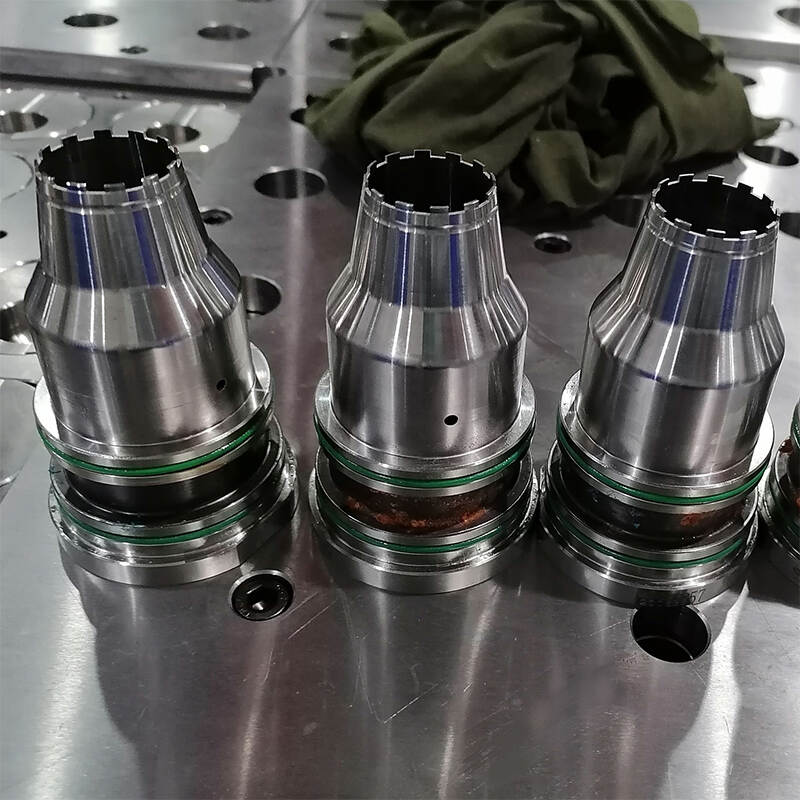Email format error
Email cannot be empty
Email already exists
6-20 characters(letters plus numbers only)
The password is inconsistent
Email format error
Email cannot be empty
Email does not exist
6-20 characters(letters plus numbers only)
The password is inconsistent


The Fascinating World of Foam Pump Assembly Machines: Revolutionizing Packaging and Manufacturing
In the fast-paced world of manufacturing, innovation often drives the efficiency and quality of production lines. One such innovation that has seen significant growth in recent years is the foam pump assembly machine. This essential tool is revolutionizing how industries handle product dispensing, particularly for liquids and foams. From beauty products to household cleaners, foam pumps are everywhere, and behind every foam pump is a sophisticated assembly process that ensures the product functions seamlessly. Let’s dive into the world of foam pump assembly machines, understanding how they work, their importance, and the wide array of industries benefiting from their use.
What is a Foam Pump?
Before we explore the foam pump assembly machine, it's important to understand what a foam pump is. A foam pump is a device that dispenses a liquid product in the form of foam rather than a liquid stream. This transformation from liquid to foam is achieved by the pump's internal mechanism, which forces air into the product as it is dispensed, turning it into a soft, airy foam. These pumps are commonly used in a range of consumer products, including soaps, hand sanitizers, shampoos, facial cleansers, and even food products like whipped cream.
One of the major reasons foam pumps have gained popularity is their ability to provide an effective yet controlled dose of product, making them highly efficient in terms of both user experience and cost savings. Foam also tends to dry faster than liquid, leaving the skin feeling less sticky, which is another advantage for consumers.
The Role of a Foam Pump Assembly Machine
A foam pump assembly machine plays a crucial role in the manufacturing process of foam pumps. These machines automate the intricate process of assembling various components that make up a foam pump, ensuring consistency, speed, and precision across large production volumes. Assembly of a foam pump typically involves several key components, including the pump body, the nozzle, the spring mechanism, and the inner foam generator, all of which must be carefully assembled to ensure smooth operation.
Without an efficient foam pump assembly machine, the manual labor involved would not only be tedious but also error-prone. Manual assembly could result in inconsistent pump performance, leading to customer dissatisfaction or even product defects. The assembly machine eliminates these issues by automating the process, providing manufacturers with higher-quality products in less time.
How Does a Foam Pump Assembly Machine Work?
The working of a foam pump assembly machine is fairly straightforward, but it involves precise automation and careful handling of small components. Let's break it down:
Component Feeding: The first step in the assembly process is feeding the individual components of the foam pump into the machine. These components include the pump housing, spring, nozzle, and foam generator. The machine uses a system of conveyor belts, feeders, and sometimes robotic arms to automatically place each part in the correct position.
Part Alignment: The next step is aligning these components. The machine ensures that each component is oriented in the correct direction before assembly begins. This step is vital because any misalignment could result in faulty pumps or ineffective foam generation.
Insertion and Assembly: Once the components are correctly positioned, the assembly machine inserts them into one another. This typically involves pushing the spring into the pump housing, installing the foam generator inside the pump, and ensuring that the nozzle is securely attached. Some foam pump assembly machines use precise automated tools to perform this insertion and assembly process.
Testing: After the components are assembled, the machine may conduct a series of tests to ensure the pump is working as it should. These tests can include checking for leaks, ensuring proper air-to-liquid ratio for foam generation, and verifying that the pump dispenses the right amount of product.
Packaging: Once the foam pumps are assembled and tested, the machine may also be capable of packaging the completed pumps into cartons or cases for shipment. In some advanced models, the foam pump assembly machine can even place the assembled pumps directly into the product bottles or containers, streamlining the entire production process.

Benefits of Using Foam Pump Assembly Machines
The use of foam pump assembly machines provides manufacturers with numerous advantages, ranging from efficiency improvements to cost savings. Here are some of the key benefits:
Increased Production Speed: Automation significantly speeds up the production process compared to manual assembly. Foam pump assembly machines can operate at high speeds, producing thousands of pumps per day. This high throughput is essential for manufacturers dealing with large-scale production.
Precision and Consistency: One of the most significant advantages of using foam pump assembly machines is their ability to maintain consistent quality. Machines are far more precise than humans, ensuring that each foam pump is assembled to the same high standard, reducing the likelihood of defects or variations.
Cost Savings: While the initial investment in a foam pump assembly machine can be significant, the long-term cost savings are undeniable. Machines require less manual labor, reducing the need for human workers on the production line. Additionally, with fewer errors, manufacturers can save on waste, defective products, and costly rework.
Improved Product Quality: Since assembly is automated and precise, the final product is of a higher quality. Foam pumps are designed to perform optimally, delivering a smooth and consistent foam each time they are used. This improves customer satisfaction and helps manufacturers maintain a competitive edge in the market.
Flexibility: Modern foam pump assembly machines are highly flexible. They can be adjusted to accommodate different sizes and styles of foam pumps, allowing manufacturers to produce a variety of products on the same machine. This flexibility is essential for businesses that need to quickly adapt to changing consumer demands.
Reduced Labor Costs: Automating the assembly process reduces the number of workers needed on the production line. This not only cuts labor costs but also reduces the risk of workplace injuries associated with repetitive tasks.
Industries Benefiting from Foam Pump Assembly Machines
Foam pump assembly machines have found applications across many industries, each benefiting from the efficiency and precision they offer. Let’s take a look at some of the industries where these machines are having the biggest impact:
Personal Care and Cosmetics: Foam pumps are widely used in personal care products like face washes, shampoos, body washes, and hand sanitizers. The demand for these products has skyrocketed in recent years, and foam pump assembly machines are helping manufacturers meet this demand by streamlining production processes.
Household Cleaning Products: Many household cleaners, such as surface cleaners, dishwashing liquids, and hand soaps, are dispensed using foam pumps. These products require accurate and consistent foam delivery, making foam pump assembly machines a key component in their manufacturing.
Food and Beverages: Foam pumps are also used in the food industry, particularly in the packaging of whipped cream or foam-based toppings. The precision provided by foam pump assembly machines ensures that each product dispenses the right amount of foam.
Healthcare and Sanitation: In the healthcare industry, foam pumps are commonly used for hand sanitizers and disinfectants. Foam pumps offer a hygienic, controlled dosage of liquid, which is essential for preventing the spread of germs. Automated assembly machines are crucial for ensuring the consistent performance of these pumps.
Automotive and Industrial Applications: In more niche markets, foam pumps are used in automotive or industrial applications for dispensing lubricants, sprays, or other specialized liquids. Foam pump assembly machines cater to these specialized needs, providing custom solutions for different industries.
Future of Foam Pump Assembly Machines
As technology continues to advance, the future of foam pump assembly machines looks promising. Innovations such as artificial intelligence (AI), machine learning, and robotics will likely make these machines even smarter and more efficient. For example, AI could help optimize the assembly process by detecting potential errors in real time, while robots may be used to further automate tasks like packaging and labeling.
Moreover, with sustainability becoming an increasingly important issue, we may see foam pump assembly machines being designed to handle eco-friendly materials or to produce pumps that are more recyclable or biodegradable. As the demand for sustainable packaging grows, these machines will evolve to meet those needs.
Conclusion
Foam pump assembly machines have become indispensable tools in the world of manufacturing, transforming how we package and dispense products. They have streamlined production, reduced costs, and ensured high-quality, consistent results across multiple industries. From personal care to healthcare, these machines have revolutionized the way foam pumps are made, providing manufacturers with the efficiency and precision needed to meet growing consumer demands. As technology continues to advance, we can expect foam pump assembly machines to evolve, further enhancing their role in manufacturing processes and contributing to more sustainable and efficient production lines.
In a world where speed, quality, and cost-effectiveness are paramount, foam pump assembly machines are undeniably shaping the future of manufacturing.

